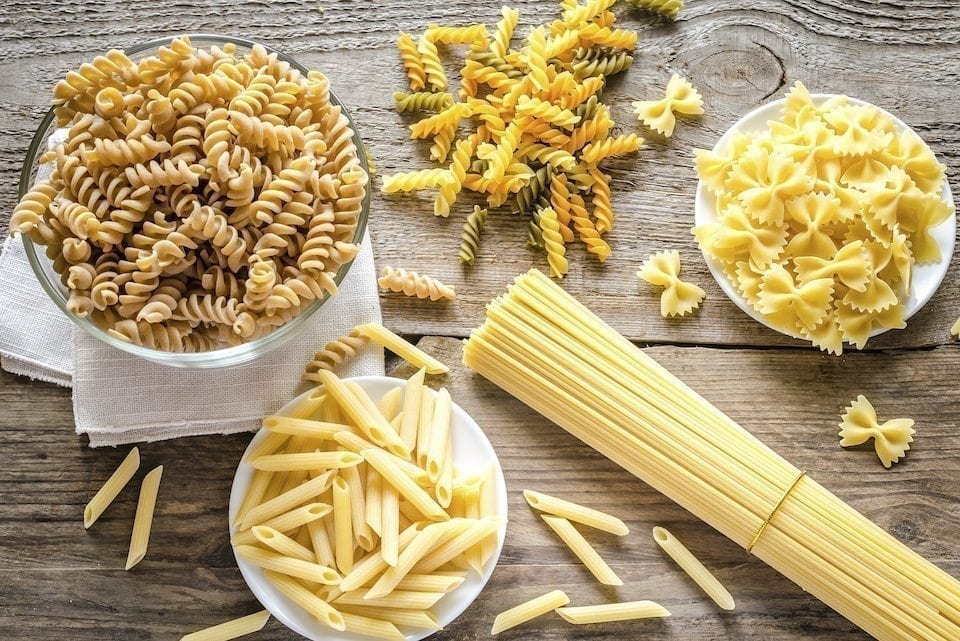Over the past several years, the movement to cut refined carbs has undoubtedly turned our relationship status with pasta to “it’s complicated”. Pasta-makers desperately want to woo us back and, if you paid any attention to the pasta aisle lately, you’ll see they’re doing it with superfoods and trendy marketing claims.
Hitting the shelves of late are rotini, ziti, penne, fettuccine and spaghetti all formulated from nutritionally “sexy” ingredients. These include chia seeds, quinoa, kamut, buckwheat, and a host of superfood veggies like spinach, tomato, carrots and peas. These specialty pastas are being pitched to health-conscious consumers. After all, who wouldn’t feel better about pasta if it draws on the power of chia seeds?
Unfortunately, a closer look at these pastas reveal they don’t all measure up.
Case in point: A whole wheat chia seed pasta (that shall not be named) delivers roughly the same amount of nutrients as whole wheat pasta. But you’d only know this if you closely examine the nutrition facts and ingredients list which has chia seed powder listed dead last. Ingredients are listed in order of weight so the first few ingredients are the main ingredients in that pasta, which in this case is whole wheat flour.
When it comes to food packaging, marketers know nutrition claims like “high in protein” and “high in fiber” influence health-conscious consumer choices. But did you know that good ol’ 100% whole wheat pasta is, by definition, already high in fiber, high in protein and costs much less? One cup is about 200 calories, contains approximately 1.5 grams fat, 40 grams of carbs, 5 grams fiber and 7 grams of protein. Super-food status or not, most pastas will still hover around these nutritional ranges with fiber being the exception. Even so it’s hard to find a pasta that beats the 7 grams in 100% whole wheat pasta.
As for those chia seed pastas claiming to contain healthy omega-3 fats, all I can say is don’t rely on pasta to get your omega-3 fix. You can’t get a substantial amount from pasta because not enough omega-3 fats are added into the noodles. They’re also not very heat stable and will breakdown from exposure to the high heat during cooking. You’re better off sprinkling some chia seeds on top, or better yet, adding a healthy serving of fatty fish, like salmon, to your pasta dinner.
The verdict: Contrary to what food manufacturers claim, superfoods likely cannot save pasta. If you want to eat pasta, accept it for what it is: a high carbohydrate food. For a boost in fiber and protein, 100% whole wheat will do just fine. Superfood additions can give pasta a different texture and taste so if you’re looking for a culinary adventure give it a try!
Have you tried one of these “superfood” pastas? If so, what’d you think?




